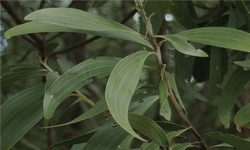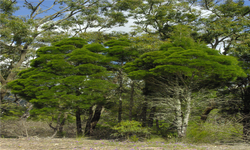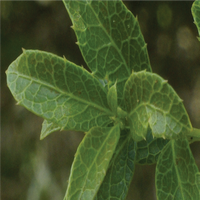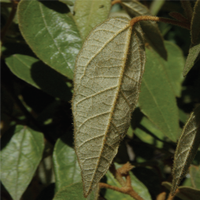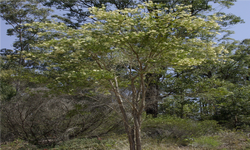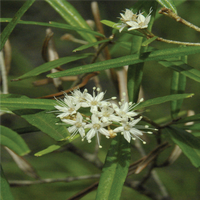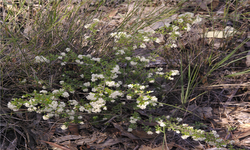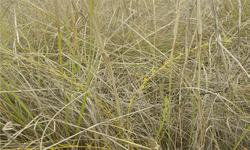Threatened Species
Protected Species
The Threatened Species fact sheet series has been produced by Council to raise awareness amongst residents and visitors about threatened plant species occurring in the South Burnett Region.
These plants are listed as critically endangered, endangered, vulnerable or near threatened under either the Queensland Nature Conservation Act 1992 or the Environment Protection and Biodiversity Conservation Act 1999 (Commonwealth).
The locations of these plants within the South Burnett road network and Council managed reserves have been mapped and an ecological report has been developed for each species. This will allow Council to better manage and protect these plants from the risk of extinction, through measures such as control of environmental and declared weeds, better fire management and restoration works in the priority areas containing these plants.
|
Acacia Tingoorensis Pedley (Tingoora Wattle) Status: Listed as Endangered. Identification: Acacia tingoorensis is a small tree with hard grey-brown, slightly furrowed bark. Distribution: Occurs in hilly country, from the Wilkesdale District in the east to the Ballogie district west of the Stuart River, over an area of approximately 50 sq km and at an altitude of 400-500m. |
|
Callitris Baileyi (C.T. White) Status: Listed as Near Threatened. Identification: Callitris baileyi is a slender pyramidal tree to 20 metres, with greyish brown, furrowed and somewhat prickly bark. Distribution: Occurs as patchy colonies in an area of approx. 250km from the Bunya Mountains in the South Burnett and Eastern Darling Downs, into Northern NSW. |
|
Denhamia Parvifolia L.S.Smith (Small-leaved Denhamia) Status: Listed as Vulnerable. Identification: Denhamia parvifolia is a small, often shrubby tree with smooth, grey bark, often mottled or banded with patches of lichen. Distribution: Occurs on basalt derived soils from Eidsvold to Yarraman and into the Eastern Darling Downs. |
|
Lasiopetalum sp.Proston (J.A.Baker 17) (Proston Velvet Bush) Status: Listed as Endangered. Identification: Lasiopetalum sp. Proston is a bush, multi stemmed shrub with bristly, golden-gingery brown hairs covering all parts of the plant. Distribution: Occurs North of Proston on the Speedwell Range Complex, in an area of less than 10 hectares (based upon current knowledge). |
Melaleuca Formosa (S.T.Blake) Craven (Kingaroy Bottlebrush, Cliff Bottlebrush)
|
|
Phebalium Distans (Mt Berryman Phebalium) Status: Listed as Endangered. Identification: A small tree to 10m with grey-fawn, mottled bark that is distinctly rough and flaky: occasionally mottled with lichen. Distribution: Occurs in a few isolated patches around Mt Berryman near Laidley, the Walla Range at Coulstoun Lakes, the Mt Jones plateau complex of the Booie Range at Kingaroy and the plateau complex of the Spedwell Range near Proston. |
|
Polianthion Minutiflorum (E.M.Ross) K.R.Thiele (Polianthion) Status: Listed as Vulnerable. Identification: Polianthion minutiflorum is a small spreading shrub to around 1 metre, with reddish brown, glossy bark. All parts of the plant are covered in stellate hairs which are white or grey, but occasionally may be straw coloured. Distribution: Occurs in a variety of habitats in hilly country over an area of approximately 800 km from Redcliffe Vale west of Mackay to Kingaroy and Nanango in the South Burnett. |
|
Thesium Australe R.Br (Austral Toadflax) Status: Listed as Vulnerable Identification: Thesium australie is a slender, bright pale green or yellow green, laxly procumbent herbaceous, short-lived perennial plant to 50 cm. Thesium is a hemi parasitic species, which means it is not parasitic at all stages of its life cycle. Distribution: Previously occurred from the Bunya Mountains to Tasmania (now considered extinct in Tasmania) in a variety of habitats ranging from waterways in hilly country to gullies around creeks and floodplains. |
| # | Name | Size | Download |
|---|


